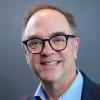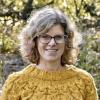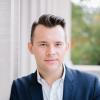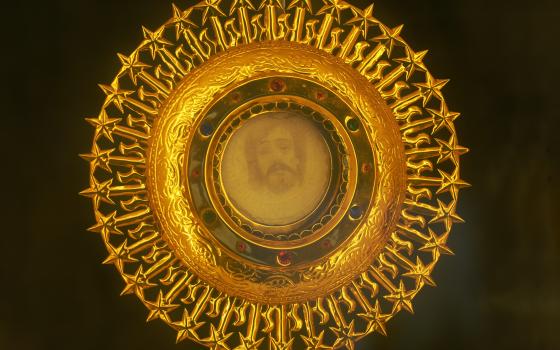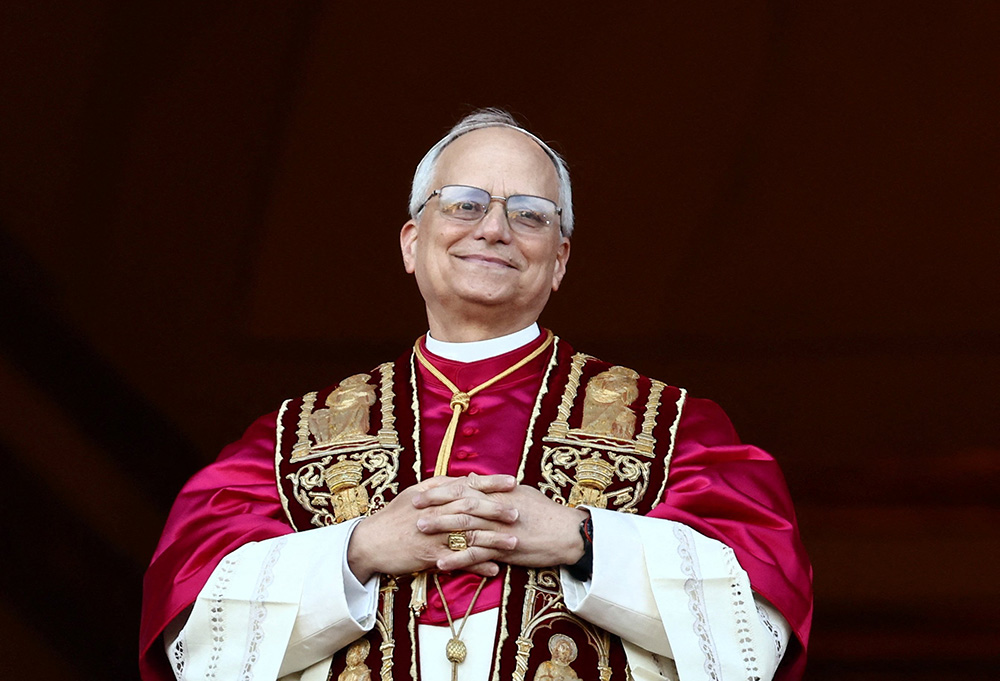
Cardinal Robert Francis Prevost, who has chosen the papal name Leo XIV, appears on the central balcony of St. Peter's Basilica at the Vatican May 8, 2025, following his election during the conclave. (OSV News/Reuters/Yara Nardi)
Robert Prevost was born on Sept. 14, 1955, in a hospital founded by the Sisters of Mercy on Chicago's South Side. Four years ago, facing bankruptcy, the nuns sold Mercy Hospital to a technology firm.
Growing up, Prevost attended St. Mary of the Assumption Parish. The parish became too expensive for the Chicago Archdiocese to maintain in the early 2010s. The parish buildings were closed and put up for sale, and the parish merged with another in 2011.
The challenges for Catholics where Prevost grew up are a microcosm of the gargantuan problems facing the Catholic Church.
As with the problems facing Catholics in Chicago, the new Pope Leo XIV must address looming financial difficulties and the challenges of a dwindling flock as the head of a global religion that counts 1.4 billion members worldwide.
The College of Cardinals has decided he is up to the challenge. That might be because of his background. Prevost is unusually qualified to address the most pressing challenges of the Catholic Church.
In a rare combination for cardinals, he has both pastoral experience in the peripheries of the church combined with expertise in navigating the complexities of the church's central governance.
Though American by birth, Prevost has spent only a third of his life in the United States. He has lived mostly in Europe and Latin America. Prevost is a polyglot who speaks English, Spanish, Italian, French and Portuguese and can read Latin and German.
As cardinal, Prevost was head of the Vatican Dicastery for Bishops, the office tasked with advising the pope on bishop appointments around the world.
While it might be early to predict the path of his papacy, there are some clues.
Prevost is known to be close to Cardinal Blase Cupich, the archbishop of Chicago.
Advertisement
The name Leo XIV could indicate his "emphasis on Catholic social teaching and, perhaps specifically the rights of workers and the poor," Jesuit Fr. James Martin wrote on Facebook before the conclave gathered.
Prevost's reading habits apparently include the National Catholic Reporter.
When NCR covered Vice President JD Vance's comments on Catholic teaching, then-Cardinal Prevost tweeted a commentary by columnist Kat Armas, a Cuban American author and theology scholar.
The column was titled "JD Vance is wrong: Jesus doesn't ask us to rank our love for others." Prevost shared the post from the NCR website.
He tweeted a Washington Post column written by Cardinal Timothy Dolan, the archbishop of New York. "Cardinal Dolan: Why Donald Trump's anti-immigrant rhetoric is so problematic," he tweeted on Jul 31, 2015, sharing the headline of the story.
In 2014, he tweeted, "It's time to end the death penalty."
Prevost has voted in Republican primaries in the state of Illinois*, yet he is a social justice advocate and generally opposed to many of President Donald Trump's policies, based on Prevost's social media posts.
In 1985, Prevost joined the Augustinian mission in Peru, becoming part of the religious order inspired by St. Augustine that seeks to find a balance of "love and learning." Augustinian friars lead semi-monastic lives and are engaged in a range of pursuits, such as education or prison work. Augustinians are one of the oldest monastic orders; the Rule of St. Augustine, the organizing principles of the order, was written circa the year 400.
At age 30, Prevost went to work in Peru, serving there until 1999, with a brief stint back in Chicago in 1987 to work as pastor for vocations and director of missions for its Augustinian province.
During his early years in Peru, Prevost wore a number of hats, including teaching in the diocesan seminary, serving as judge in a church court, and leading a parish on the outskirts of the city of Trujillo.
In 1999, Prevost was elected the head of the Augustinians' Chicago-based province. And then in 2001, he tapped as prior general of the worldwide order, which he led until 2013. During that time, he was based in Rome but spent most of his time on the road and in the air, visiting the nearly 50 countries where the Augustinian order is present.
In 2014, Francis sent him back into the mission field, naming him bishop of Chiclayo, in northern Peru. He served there until the pope called him to Rome again for full-time service in the Roman Curia in 2023.
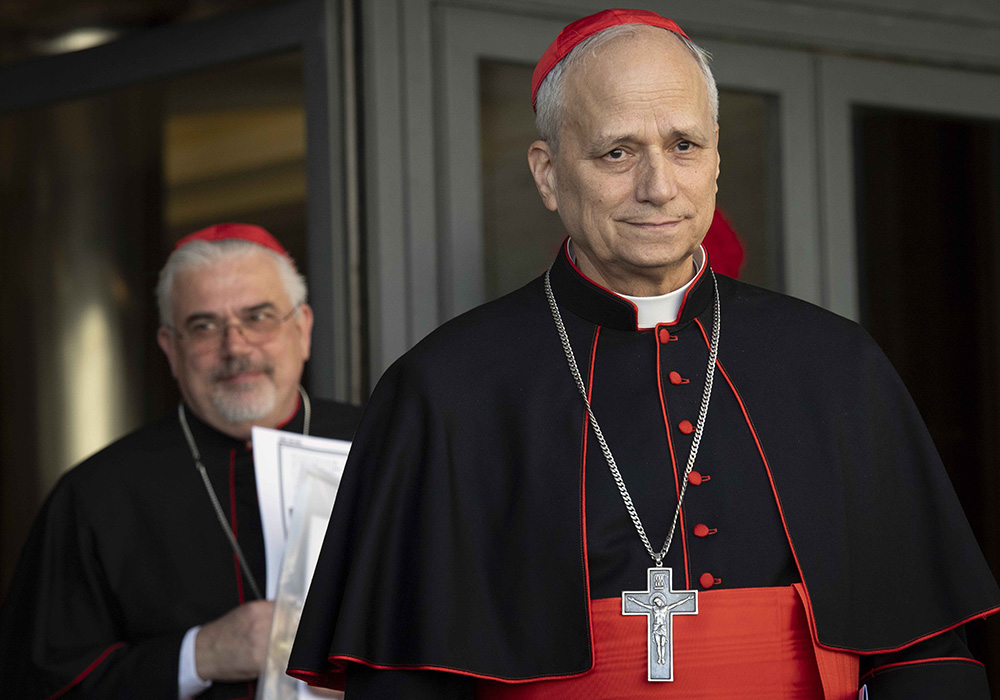
U.S.-born Cardinal Robert Prevost, prefect of the Dicastery for Bishops under Pope Francis, leaves the Vatican Synod Hall April 22, 2025, after the first general congregation of the College of Cardinals. Cardinal Fabio Baggio, undersecretary of the Dicastery for Promoting Integral Human Development, walks out behind him. (CNS/Vatican Media)
In Vatican City, Prevost has a reputation for industriousness, spending as much time working to identify new bishops as he does in dealing with problem cases — such as that of Bishop Joseph Strickland, who was head of the Diocese of Tyler, Texas, until he was removed from his post in 2023.
Prevost has been a vocal proponent of Francis' emphasis on synodality — efforts to make the church's structures more inclusive and participatory. In a 2023 Vatican News interview, Prevost said synodality was a means to healing the polarization currently gripping the church.
His background in canon law also likely provided some comfort to synod skeptics, who have groused that synodality could pose threats to the church's tradition.
While fluent in languages, he is not garrulous. When he speaks, he does so with caution and great deliberation. But his steely determination and clarity might comfort those looking for a leader who knows where he wants to go and how to get there.
The troubles in the area of his birth are common throughout U.S. dioceses and around the world.
Founded in 1886, St. Mary of the Assumption Parish straddled the line with Chicago's south suburb of Dolton, which attracted families in the post-World War II boom.
Around the time Prevost was born in 1955, the parish had to expand in the 1950s to meet the growing neighborhood.
Among the suburbanites were Louis and Mildred Prevost and their three sons. Louis was a school superintendent (later a Catholic elementary school principal) and Mildred was a librarian.
The family was active in the parish as musicians, altar boys, lectors and volunteers, according to the Chicago Sun Times. "Millie" was one of the women who kept the parish running as a daily Massgoer, fundraising volunteer and president of the Altar and Rosary Society.
When his home parish, St. Mary of the Assumption, was forced to close in 2011, it merged with the nearby Queen of Apostles Parish to become the new St. Mary Queen of Apostles Parish.
With only 234 registered families at the time, St. Mary of the Assumption's church and school were closed because its buildings were older and more costly to maintain, the Chicago archdiocesan newspaper reported.
The tabernacle, Stations of the Cross, and an image of Our Lady of Guadalupe were brought to the new site. The Guadalupe image was especially beloved by Latino parishioners, who made up about a quarter of the congregation in 2011.
The news of an American pope was unexpected, even by a former classmate, also an Augustinian priest. Reached by phone, Fr. William Lego, pastor of St. Turibius Parish in Chicago, expressed shock, and said, "I can't talk about him now that he is pope." Then he added that he had to go. He was tending to and consoling a parishioner with cancer.
*This article has been edited to clarify Prevost's political affiliation.
John Grosso contributed to this story.
The National Catholic Reporter's Rome Bureau is made possible in part by the generosity of Joan and Bob McGrath.
NCR is an independent nonprofit and relies on support from readers like you, especially at this crucial moment in church history. Please donate here to the Spring Fund Drive.
